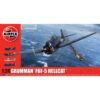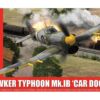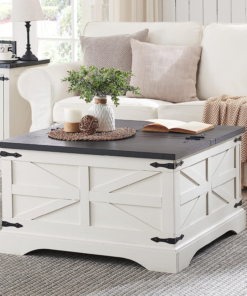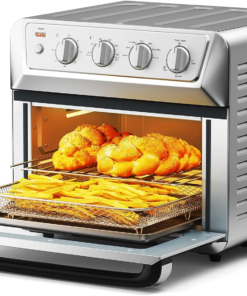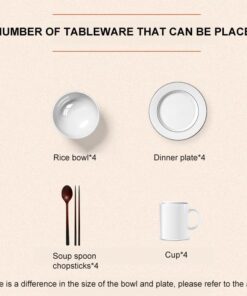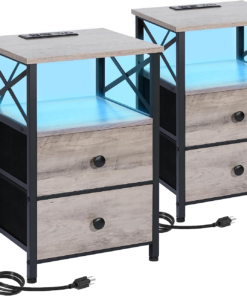Airfix 1/24 British Supermarine Spitfire Mk.IXc A17001
$59.99
-
Returns & Exchanges within 30 daysAny return for unsatisfied item(s) is available in 30 days
-
Worry-Free ReturnsSeller covers return shipping
-
Money Back GuaranteeA full refund within one week upon receiving your return
-
3-Month WarrantyCovering any possible defect in materials and workmanship
Plastic model kit, assembly required. Glue, paint and finishing supplies not included.
Elegant and graceful to look at, the Spitfire’s appearance masked the fact that this was a deadly fighting airplane and one which was adaptable enough to undergo almost constant development throughout the wartime years, allowing later marks of the fighter to post speeds which were almost 100 mph faster than the first machines to enter service. With a service career which extended well into the post war years, the Spitfire outlived all its aviation contemporaries and with over 22,000 Spitfires of all variants (including Seafires) eventually being built, Spitfires are still a regular sight at Airshow events all over the world, as an ever increasing number of restored airworthy aircraft continue to write the enduring Spitfire story. Even though the prototype Spitfire made its first flight over 85 years ago, the aircraft is still widely regarded as Britain’s most famous aircraft type and instantly recognizable to many millions of people the world over.
The Spitfire Mk.IX variant was arguably the most important mark of Spitfire in the entire production run and because of that, it is somewhat surprising to learn that it was actually something of a stop-gap development. The arrival of the Luftwaffe’s new Focke Wulf 190 fighter over the Western Front in August 1941 saw RAF Spitfire Mk.Vs operating over the Channel falling victim to the ‘Butcher Bird’ in ever increasing numbers and something had to be done. A major Spitfire upgrade was in progress, but the Mk.VIII was still some way off, as manufacturing facilities prepared their tooling jigs for the new aircraft, but there was a temporary solution. One of the major features of the new Spitfire was its use of a powerful new version of the Rolls Royce Merlin engine and it was proposed that fitting this new engine to a Spitfire Mk.V airframe would give the fighter a welcome performance boost.
The first 100 Spitfire Mk.IX fighters were actually Mk.Vc airframes adapted to take the new Merlin 61 two stage, two speed supercharged engine, with this combination producing a thoroughbred fighting airplane, one which was more than capable of challenging the FW190 and the latest ‘F’ variant of the Messerschmitt Bf 109. In fact, the new Spitfire was considered so successful that this would become the second most heavily produced variant in the entire production run and if including the aircraft powered by the license built Packard Merlin 266 (Spitfire Mk.XVI) even eclipsed the Mk.V in production numbers. With further powerplant refinement taking place throughout the production life of this variant, the first Mk.IX Spitfires started to join RAF Squadrons from July 1942, with this famous mark of Spitfire going on to see service past D-Day and into the post war era. The last major Merlin engine powered variant of the Spitfire, this ’emergency stop-gap fighter’ actually became something of an aviation classic.
Be sure to check out our aircraft accessories, metal barrels, and seat belts!We are not responsible for any taxes, duty, VAT, customs or other fees on the receiver__ end.Check out our other items, and save on shipping! To receive combined shipping, place the items you wish to purchase in your cart and the discounted shipping will be calculated at checkout.
Please complete all your shopping before checking out, we cannot combine shipping on separate orders.
Sorry, no shipping refunds can be given for combining separate orders.
Due to the size/weight of this item, ground shipping is required.

